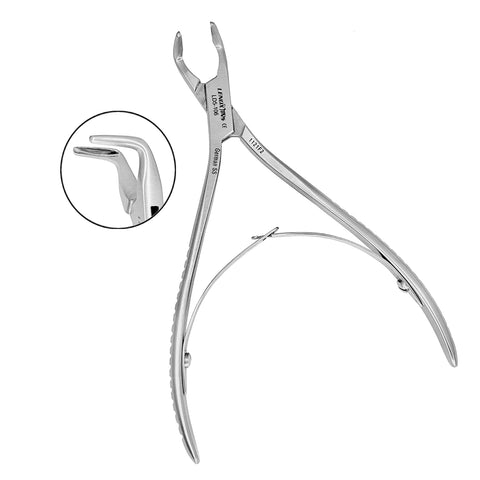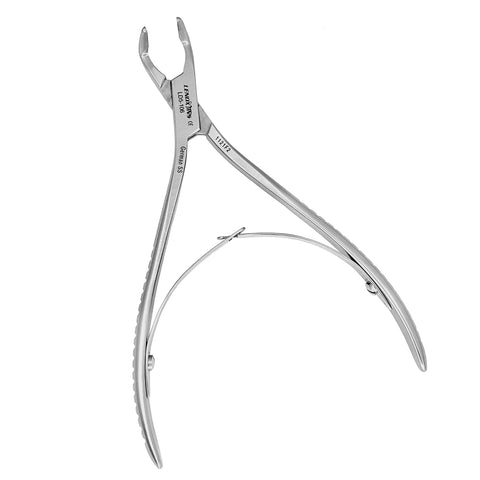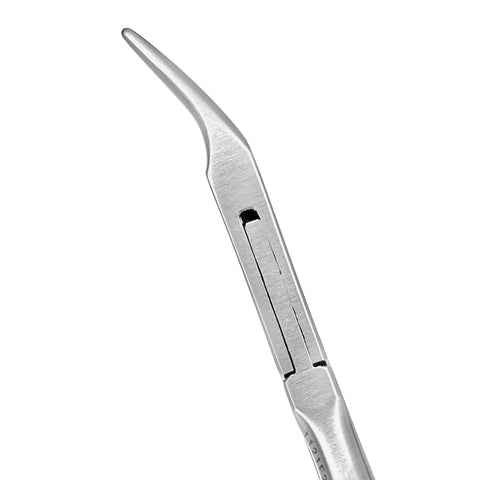
Understanding Pet Health Trends Through the Seasons
Understanding Pet Health and Seasonal Changes
In today's evolving climate, ensuring pet health year-round requires understanding how seasonal shifts impact an animal’s well-being. Pets, like their human companions, face environmental stressors that affect behavior, metabolism, and overall health. Awareness of seasonal changes is essential for providing effective preventative care against hazards such as heat stroke, frostbite, dehydration, and allergies. Whether at home, in an outdoor setting, or at an animal hospital, care approaches must adjust to variations in temperature, humidity, and pest activity. By understanding how the environment influences pets through each season, owners and veterinary professionals can better optimize diet, hydration, and activity levels while mitigating risks related to poison exposure, mold, and pollen.
This article explains how different seasons impact pets and offers guidelines to safeguard their health through seasonal nutrition, hydration, skin and coat care, parasite prevention, and indoor wellness strategies. The content is organized into clear sections addressing key seasonal considerations and actionable advice for maintaining optimal pet care.
Why Seasonal Awareness Matters for Pet Health
Seasonal changes bring unique environmental challenges that directly affect pet health. In spring, rising temperatures and increased pollen can trigger allergies and respiratory complications. During summer, heat stress combined with high humidity elevates the risk of dehydration and heatstroke. Autumn’s cooler temperatures and shorter days may impact behavior and appetite, while winter’s severe cold introduces dangers like frostbite and hypothermia.
Overview of environmental effects on pets
Exposure to pollutants, allergens, and molds increases risks for respiratory issues, skin irritations, and digestive upsets. For example, higher airborne pollen in spring can lead to more allergy symptoms, while summer humidity encourages parasite proliferation such as fleas and ticks. Drastic temperature fluctuations may require adjustments in routine veterinary screenings to monitor circulatory and respiratory function.
Common health risks in changing weather
Pets face a variety of health risks with changing weather. Summer heat can cause dehydration and heat stroke, especially in breeds with heavy coats or flat faces. Winter’s extreme cold poses frostbite and hypothermia risks, particularly for elderly pets or those with low insulation. Spring and autumn can bring seasonal allergies and skin irritations, with increased exposure to insects and ticks, necessitating regular veterinary checkups.
Behavior patterns linked to seasons
As the environment shifts, so does pet behavior. Warmer weather often results in increased outdoor activity, but can also lead to irritability and fatigue. Some pets may become hyperactive or anxious during transitions, while winter’s shorter days can induce lethargy or even depression. Understanding these patterns helps adjust exercise routines and indoor enrichment to maintain both mental and physical well-being.
Spring: Allergies, Pests, and Energy Spikes
Spring brings renewal, yet it also introduces challenges like seasonal allergies, pest infestations, and bursts of energy. As days lengthen and temperatures rise, pets encounter more outdoor allergens and insects, requiring proactive management.
Managing seasonal allergies in pets
Common allergens such as oak and birch pollen can cause itching, sneezing, watery eyes, and skin infections from excessive scratching. Management includes regular bathing to remove allergens, use of hypoallergenic shampoos, and veterinary-prescribed antihistamines or immunotherapy. Keeping indoor air clean with purifiers and reducing outdoor exposure during peak pollen hours can also help.
Tick, flea, and heartworm prevention
Spring is a peak time for ticks, fleas, and heartworm-carrying parasites. Preventative measures include routine vaccinations, specialized tick and flea treatments, and regular health screenings. Consistent parasite control can dramatically reduce the risk of heartworm disease. Maintaining cleanliness through frequent vacuuming and washing pet bedding is also critical.
Increased activity and how to handle it
With increased energy levels during spring, pets benefit from structured exercise routines like long walks, interactive play sessions, or agility training. While this activity boosts physical fitness, it is important to avoid overheating by gradually increasing exercise intensity and monitoring for signs of fatigue.
Summer: Heat Stress, Hydration, and Travel
Summer poses significant challenges as high temperatures increase the risk of heat-related illnesses. Managing heat stress, ensuring proper hydration, and planning safe travel are essential.
Identifying heatstroke symptoms in pets
Heatstroke is a serious emergency marked by rapid panting, high body temperature, excessive drooling, lethargy, and possible collapse. Early detection is key to reducing fatality rates. If symptoms arise, move the pet to a cool area, apply cool (not cold) water, and seek veterinary care promptly. Breeds with short snouts, such as Bulldogs and Pugs, are particularly vulnerable.
Proper hydration tips and safe water practices
Maintaining hydration is crucial during summer. Pets should have constant access to fresh water, and water-rich foods can supplement their intake. Devices like pet water fountains encourage regular drinking. During travel, use portable bowls and ensure vehicles are ventilated and shaded to prevent dangerous temperature spikes.
Traveling with pets during summer
When traveling in summer, plan ahead to ensure pet safety. Schedule a pre-travel veterinary checkup to confirm fitness for travel and secure pets in well-ventilated carriers. Never leave pets unattended in parked vehicles and make frequent stops for rest and hydration. If flying, verify airline policies and choose temperature-controlled transport options.
Autumn: Diet Adjustments and Behavioral Shifts
Autumn signals a transition that affects both dietary needs and behavior. Cooler temperatures and reduced outdoor time require adjustments in routine and nutrition.
Preparing pets for less outdoor time
As outdoor activity declines in autumn, create enriched indoor environments with interactive toys, puzzle feeders, and dedicated play areas to help prevent obesity and anxiety. Transition gradually from outdoor to indoor exercise as the weather cools.
Seasonal diet and nutrition tweaks
With decreased activity in autumn, caloric needs may drop. Veterinary nutritionists recommend reducing portion sizes and switching to food supportive of joint health and coat condition. Diets enriched with omega-3 fatty acids, antioxidants, and essential vitamins help support overall health during the seasonal transition.
Behavioral changes in cooler temperatures
Shorter days and lower temperatures can lead to changes in pet behavior, including lethargy or increased clinginess. Adjusting exercise routines, providing extra bedding or heated pads, and maintaining regular feeding schedules can help stabilize mood and keep pets content.
Winter: Cold Weather Risks and Indoor Wellness
Winter challenges pet health with cold temperatures, ice, and snow that raise the risk for frostbite, hypothermia, and joint discomfort. Indoor care becomes essential during this season.
Preventing frostbite and hypothermia
To prevent frostbite and hypothermia, limit pets’ exposure to extreme cold and use protective gear such as booties, sweaters, or pet jackets. Monitor pets closely for early cold stress signs—like shivering or lethargy—and provide a warm, draft-free resting area. Dry pets thoroughly after exposure to wet conditions to avoid further cooling.
Indoor enrichment activities for mental health
Reduced outdoor time in winter makes indoor enrichment vital. Engage pets with interactive toys, training sessions, and scent-based games to keep their mind active and reduce stress. Short indoor play sessions help maintain physical fitness and strengthen the bond between pets and their owners.
Joint care for aging pets in winter
Cold weather can aggravate arthritis and joint stiffness, especially in older pets. Incorporating gentle exercise, warm bedding, and massages can help maintain joint health. Supplements such as glucosamine, chondroitin, and omega-3 fatty acids may improve joint mobility and reduce inflammation as advised by a veterinarian.
Seasonal Skin and Coat Care
Maintaining healthy skin and coat is crucial as environmental conditions change with the seasons. Regular attention and grooming prevent dermatological issues.
Spring and fall shedding cycles
During spring and fall, pets undergo intense shedding. Regular brushing and de-shedding treatments help remove loose hair and dander, reducing the risk of allergies. Frequent grooming also stimulates blood flow, promoting a healthier coat. Use hypoallergenic or moisturizing shampoos to support skin health.
Preventing dryness in summer and winter
Extreme weather can lead to dry, irritated skin. In summer, sun exposure may strip natural oils, while winter’s cold and heating can dry out the skin. Specialized moisturizing shampoos and conditioners, along with regular application of pet-friendly moisturizers, help maintain skin hydration in both seasons. Ensuring pets have adequate water intake supports overall skin health.
Grooming routines by season
Grooming should be tailored to the season. In spring and autumn, more frequent grooming helps manage shedding and prevent matting. During summer, focus on light grooming to remove pollutants, and in winter, adopt gentle brushing techniques to protect sensitive, dry skin. Consistent grooming not only keeps pets looking good but also provides early insights into possible skin issues.
Seasonal Nutrition and Hydration Needs
A pet’s dietary needs vary with the seasons due to shifts in energy expenditure and metabolism. Adjusting nutrition and hydration is essential for maintaining overall health.
Adjusting food intake with energy levels
In warmer months, increased activity and heat may boost metabolism, requiring balanced meals with sufficient hydration but not excess calories. In contrast, winter’s lower energy needs call for moderated food portions to prevent weight gain. Veterinary guidance can help recalibrate feeding practices according to seasonal activity levels.
Seasonal fruits and veggies safe for pets
Incorporating seasonal fruits and vegetables provides additional vitamins, minerals, and hydration. In summer, options like blueberries, seedless watermelon, and cucumbers can be refreshing and nutritious, while in winter, vegetables such as pumpkin and carrots support digestive health. Always avoid known toxins like grapes and onions when selecting these supplements.
Hydration during dry and hot seasons
Proper hydration remains a cornerstone of pet health, especially in hot weather. Regularly refreshing water, using pet water fountains, and offering water-rich foods help prevent dehydration. Consistent hydration also supports kidney health and reduces the risk of urinary tract issues.
Behavior and Mood Fluctuations Throughout the Year
Pets naturally experience mood changes with seasonal shifts. Variations in temperature, daylight, and environmental stimuli can lead to anxiety, lethargy, or aggression. Understanding these fluctuations allows for appropriate interventions.
Identifying weather-related anxiety
Extreme weather, such as thunderstorms or heavy rain, can trigger anxiety in pets, leading to restlessness or excessive vocalization. Creating secure indoor environments with calming music or white noise, along with gradual exposure to mild weather variations, can help reduce stress and ease anxiety.
Seasonal triggers for aggression or lethargy
High summer temperatures may induce irritability, while cold weather might result in lethargy. Monitoring behavior closely and maintaining consistent routines, such as regular exercise and feeding, can help mitigate these seasonal shifts. Minor adjustments like increased playtime or interactive training can also improve mood stability.
How to calm pets during storms or temperature shifts
During sudden weather changes, providing a calm and familiar environment is key. Tools such as pheromone diffusers or calming jackets, along with establishing a designated “safe zone” with soft bedding, can help ease anxiety during storms or extreme temperature fluctuations.
Seasonal Parasite Awareness and Prevention
Parasite control is critical year-round, and seasonal patterns can increase pest risks. Understanding parasite life cycles and implementing preventive measures during peak seasons significantly reduces infestations.
Flea and tick cycles by region and season
In warmer months, fleas and ticks proliferate. Regular application of spot-on treatments, oral medications, and flea collars, combined with routine grooming and environmental cleaning, can reduce infestations effectively. Awareness of regional parasite cycles helps in planning timely prevention.
Heartworm seasonality and prevention
For dogs and some cats, heartworm remains a serious concern when mosquitoes are active. Consistent monthly heartworm prophylaxis, along with environmental measures such as eliminating standing water, is essential to reduce infection risk.
Keeping indoor pets parasite-free
Even indoor pets can encounter parasites brought in on clothing or other animals. A clean indoor environment, regular bathing, and the use of veterinarian-approved preventive treatments help ensure that indoor pets are equally protected against flea and tick infestations.
Preparing for Vet Visits Based on Seasons
Regular veterinary checkups are essential, with each season presenting unique health challenges. Tailoring visit focus to seasonal issues facilitates timely adjustments in care and preventive strategies.
Scheduling seasonal health checkups
Scheduling a veterinary visit at the start of each season helps address specific concerns: allergy and parasite testing in spring; monitoring for heat stress in summer; diet adjustments and behavior checks in autumn; and joint, skin, and cold injury assessments in winter. Regular checkups support early diagnosis and intervention.
What to discuss with your vet each season
During seasonal appointments, discuss updates in parasite prevention, dietary adjustments for energy changes, and strategies to manage joint pain and skin conditions. Open communication about any behavioral changes such as lethargy or anxiety ensures treatment plans remain effective.
Vaccination schedules and seasonal relevance
Vaccination schedules may require seasonal adjustments. In warm months, ensure vaccines against parasites transmitted by ticks and fleas are up-to-date, while in colder months, additional vaccinations might be recommended to mitigate risks from indoor exposures. Regular review of immunization protocols ensures pets remain adequately protected.
Table: Seasonal Pet Health Considerations
|
Season |
Key Environmental Factors |
Common Health Risks |
Recommended Preventative Measures |
Supporting Data/Values |
|
Spring |
Pollen, increased allergens, moderate heat |
Allergies, parasites, hyperactivity |
Regular bathing, antihistamines, tick & flea prevention |
↑ Allergy symptoms |
|
Summer |
High temperatures, humidity, prolonged sun exposure |
Heatstroke, dehydration, parasite proliferation |
Frequent hydration, cooling strategies, heartworm prevention |
↓ Heartworm risk with prevention |
|
Autumn |
Cooling temperatures, shorter daylight hours |
Reduced activity, dietary imbalances |
Adjusted diet, indoor enrichment, routine exercise |
↓ Obesity risk with adjustments |
|
Winter |
Cold weather, indoor heating, low humidity |
Frostbite, hypothermia, joint stiffness |
Warm bedding, protective clothing, joint supplements, moisturizing shampoos |
Joint function improved with supplementation |
This table summarizes key seasonal factors, common risks, and recommended preventive measures to support pet health based on seasonal research and veterinary guidelines.
Detailed List: Top 7 Seasonal Preventative Care Tips for Pets
Regular Flea and Tick Prevention – Consistent Protection Implement year-round parasite prevention with monthly treatments during spring and summer to reduce infestations significantly.
Hydration Management – Enhanced Water Intake Ensure pets drink fresh water regularly, using water fountains and water-rich foods to prevent heatstroke and dehydration.
Diet Adjustments – Tailored Nutritional Support Modify food portions according to seasonal energy levels; reduce portions in winter and maintain balanced, nutrient-rich meals in summer.
Controlled Exercise Routines – Safe Outdoor Activity Design exercise plans that match seasonal temperatures, such as cooler walks in summer and indoor play in winter, to avoid overexertion.
Skin and Coat Maintenance – Regular Grooming and Moisturization Adjust grooming routines seasonally: thorough brushing during shedding periods and gentle care during winter to prevent dry skin.
Indoor Enrichment – Mental and Physical Stimulation Provide interactive toys, puzzle feeders, and structured play to keep pets mentally stimulated, especially when outdoor activity is limited.
Scheduled Veterinary Visits – Proactive Health Monitoring Book seasonal vet checkups to monitor for allergies, parasites, joint issues, and overall health changes, ensuring timely preventive care.
Table: Seasonal Preventative Care Strategies
|
Strategy |
Season |
Focus |
Methods/Examples |
Impact on Health |
|
Parasite Control |
Spring/Summer |
Flea, tick, heartworm prevention |
Spot-on treatments, oral medications, flea collars |
Reduces infestations significantly |
|
Hydration Enhancement |
Summer |
Preventing heatstroke, dehydration |
Water fountains, frequent water breaks |
Lowers risk of heatstroke |
|
Dietary Adjustments |
Autumn/Winter |
Caloric balance, joint health |
Adjusted portions, omega-3 enriched meals |
Prevents weight gain, supports joints |
|
Indoor Enrichment |
Winter/Autumn |
Mental and physical stimulation |
Puzzle feeders, interactive toys |
Reduces anxiety, improves cognition |
|
Skin & Coat Maintenance |
Spring/Fall/Winter |
Preventing dryness, managing shedding |
Regular grooming, moisturizing shampoos |
Improves skin and coat health |
|
Controlled Exercise |
All Seasons |
Safe physical activity |
Structured walks, indoor routines |
Enhances fitness, minimizes injuries |
|
Regular Vet Checkups |
All Seasons |
Early detection, treatment adjustments |
Seasonal assessments, vaccination updates |
Prevents chronic issues |
This table reinforces a systematic approach to seasonal preventative care to ensure pets remain healthy throughout the year.
Behavior and Mood Fluctuations Throughout the Year (FAQ Section)
Frequently Asked Questions
Q: How do seasonal changes affect pet behavior? A: Seasonal variations can lead to changes in energy and mood. Pets may become hyperactive in warm weather or lethargic in cold months. Adjusting exercise and indoor enrichment routines helps manage these fluctuations.
Q: What can I do to prevent seasonal allergies in my pet? A: Regular grooming, bathing, and using antihistamines or immunotherapy under veterinary guidance can minimize allergic reactions. Reducing exposure during peak pollen times is also beneficial.
Q: What are the most effective hydration strategies for pets during summer? A: Providing multiple fresh water sources, using water fountains, and incorporating water-rich foods into their diet help maintain hydration and reduce the risk of heatstroke.
Q: How do I adjust my pet’s diet for each season? A: Modify portion sizes to match activity levels. In summer, support increased energy expenditure with balanced meals, while in winter, reduce portions to prevent weight gain. Nutritional supplements can further support health.
Q: Are there specific grooming practices for seasonal coat care? A: Yes. Increase brushing during shedding seasons and use de-shedding or moisturizing shampoos as needed. In winter, opt for gentle grooming to protect dry, sensitive skin.
Q: How often should I schedule vet visits during seasonal transitions? A: It is advisable to arrange a vet visit at the start of each season to assess changes in behavior, skin condition, and overall health, ensuring any issues are addressed promptly.
Q: What indoor enrichment activities are best during colder months? A: Interactive toys, puzzle feeders, and regular training sessions help keep pets mentally stimulated and physically active when outdoor play is limited.
Final Thoughts
Seasonal changes require a dynamic approach to pet care. By understanding and adapting to environmental shifts—whether through modified diets, appropriate exercise, proactive grooming, or timely veterinary checkups—pet owners can significantly improve their pets’ well-being. These seasonal strategies not only reduce common health risks like allergies, heatstroke, and joint pain but also help maintain a balanced mental state throughout the year, ensuring pets enjoy a healthier, happier life.














